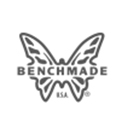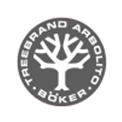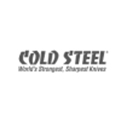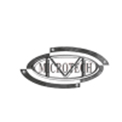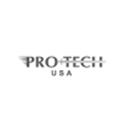What to Look for in a Pocket Knife
26th Apr 2020

A good pocket knife is probably going to end up being the most important tool you own, with very little to compare it too. The fact of the matter is that knives can accomplish more in shorter order than just about any other tool. They are true jacks of all trades, although they do happen to be masters of some. If you are here today shopping for a pocket knife to add to your collection or your rotation, then keep these things in mind while you’re shopping. Each is as important as the last, and they’re all the more important if you are simply adding another knife to, say, your EDC rotation. If you’re just here for an additional blade, then have no worries but keep these in mind anyway.
How Will You Use the Knife?
This is probably the most important question to ask yourself while you are shopping for a knife, whether new or complementary. A pocket knife can have a lot of different tools attached to it for a variety of different uses, or only one blade. While any knife can reasonably be used with confidence to tackle a large number of tasks in the field or the workshop, there are some designs and features that make certain knives better suited than others to the task. Keep two things in mind while reading this list. Number one, keep in mind that this list is not exhaustive and is only meant to serve as a guide, and number two, that while certain additional features may be valuable, for the most important thing to figure out from the start is how the knife is going to be used.
Bushcraft or Camping
Many and varied are the challenges you will face while you are camping in the backcountry or you are practicing your bushcraft skills to become a better outdoorsman, even if you are only in the backyard.
Some might tell you that a pocket knife is good only as an accessory or a companion to a main blade when you are camping or practicing bushcraft skills, but many modern folders and pocket knives make serviceable tools for even relatively heavy tasks. While there are some that probably should remain the purview of larger fixed blades, there’s not too much that a reliable folding knife can’t perform for you.
Camping, in particular, is one of those environments where you never know what you’ll be facing, so you should pick out a knife that’s fairly good at jumping to take down a number of jobs, maybe even a couple.
You might subscribe to the philosophy that your pocket knife should be a backup to a main blade, or maybe you’ll want to consider investing in a folder with a stout blade and then a smaller multi-tool as a backup to that. The reason for this is that while you are camping or bushcrafting you might find yourself with a need for splitting logs for fire of structure or with a need to carve a notch into a wood for building tools or making joints. At the same time, you might need to carve hooks from wood or a gullet lodge for fishing, or you might need the practicality of a multi-tool to open up a can or to fix your watch or your glasses. When you’re in the field, you really never know, and the more utility you can throw a lasso around, the better.
Carving or Crafting
If you are a tradesman or have a hobby of carving or crafting, then your needs in a pocket knife are almost certainly going to be pronouncedly different from a bushcrafter. That doesn’t mean that any two knives can’t reasonably perform the same task - we’d even argue they could - but rather than many would be better suited to the task than others.
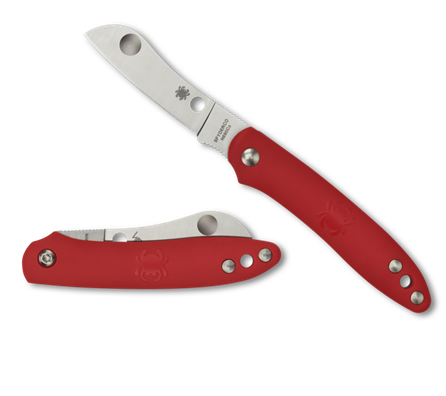
For example, if you are a whittler, you might want to find a shorter, smaller blade on a pocket knife or as a fleet of blades in a stockman or a congress knife to keep as a little tool in your pocket or your workshop. The shorter blade will give you much more leverage and will be easier to control while attempting to make fine cuts in wood. In addition, a blade profile like a sheepsfoot, or perhaps even a Wharncliffe blade, would give you a lot more control and flexibility when carving. While that goes for wood, the same could be said about the materials with which many other hobbyists use.
If you are a general crafter, then you might not have a need for a pocket knife with a heavy spine. In fact, you might be able to get away with the same small pocket knife as the former, and it might not even need a locking blade.
Hunting and Fishing
As a hunter or fisherman, as any sportsman, really, your primary use for your blade is probably going to be cleaning game or fish. Of course, you always need to have a knife in the field with you to help you tackle any odd challenges, but generally, your first purpose is likely to help you dispatch a harvest. That being said, different harvests require a different blade to clean and quarter it effectively.
For example, for many big game hunters, fixed blades have traditionally been seen as the only viable option. That’s no longer the case, as many hunters are now opting to turn to locking folding blades to gut and quarter their quarries. In fact, it doesn’t even stop there. There has been a recent movement among makers of knives that accept replaceable surgical blades that are intended for one-time use. It’s a more recent development, but it’s fitting nonetheless.
Hunters should look for a pocket knife that has a locket mechanism and generally one with a swept blade and a shorter, perhaps even a drop point. That will help prevent puncturing anything inside the cavity of game that is being cleaned, and the extra belly of the edge will make skinning and boning possible that would be difficult with other designs in pocket knives.
As for fishermen, there aren’t many pocket knives out there that are expressly designed to serve as a compatriot to them, although in recent years there have been developments in folding filet knives. We’ll go about it two different ways.
If you practice filleting your fish, you might want to go with a pocket knife with a fairly thin blade and look for something like a hollow grind on the edge that will be easy to keep razor-sharp. It might not be as flexible as a true filet knife but it will still be practical and you can even use it as a bait knife. If you pan dress your fish, then you have a lot more freedom. All you need is a thin point and a sharp edge. Whatever else you pick around that is entirely up to you.
Everyday Carry
If you’re shopping for a knife to add to your pocket or to your rotation for everyday carry, then you need to be prepared for a lot more generalities than in the other scenarios we mentioned.
What do you frequently come across during the course of a day or at work? Do you open hundreds of boxes or envelopes per day? Do you carve a lot of wood or remove dried glue from the corners and edges of countless workpieces? Do you work with lines on a boat that need to be cut and spliced and fused and joined?
The circumstances of your EDC will dictate the type of pocket knife you choose to add to your pocket. For some, a single locking blade will suffice as a partner. For others, it might be more practical to get a smaller pocket knife that offers the utilitarianism of multiple blades. Others yet might find more service in a multitool, for example, if they work with machines or in a shop. You just need a little introspection to figure out which one works best for you.
Features
After you have figured out what your primary purpose is in looking for a new knife you can start to narrow down styles and features so you can actually pick out a model to meet those needs. Keep these in mind, and any others you think of, while you’re shopping.
Number of Blades or Tools
This is arguably one of the most important things to keep in mind when shopping for a pocket knife. If you can get away with one blade, that’s fine, and nowadays most folding knives are singly bladed anyway. Just make sure the blade you pick out will suit you.
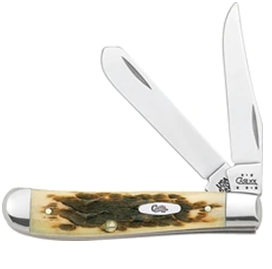
Otherwise, you might want to invest in a traditional pocket knife with multiple blades or even in a multitool that offers you the additional utilitarian features of extra tools like pliers, screwdrivers, wrenches and more. For some EDC applications, a knife like this is tops. You still have the ability to open things with a blade but if your watch needs its batteries replaced, you can still get into the case. That’s only one small example, but you get the picture.
Blade Profile
Blade profile is equally important if not more than the number of blades you need in a tool. The fact of the matter is that some blades are better suited to a task than other blades are, although we’ve already covered that matter.
For example, a sheepsfoot blade is excellent at carving and has an exceptionally strong point. A thing blade is better at working in fine spaces. Similarly, a finely clipped point is ideal for carving fine details or reaching into small confines. A stout point like a drop point blade or a spear point has a lot of steel behind it for added strength - you can use a point like this for improvised drilling in wood, for example. It’s a sloppy job, but it works. By a different token, a blade with a lot of belly and a swept edge or trailing point is great for slicing or skinning. Different profiles are suited differently to a wide range of tasks, so pay attention to that when shopping.
Locking Mechanism
A knife’s opening system and locking mechanism are equally important to consider when shopping. Some blades have neither - these are best suited for lighter work. For example, a traditional pocket knife like a stockman or a barlow or a congress knife is not going to have an opening system and they are almost exclusively made with slip joints instead of locks. Knives like these are fine for gutting trout and whittling, but it’s not a good idea to put a lot of muscle behind them.
Similarly, many knives are assisted-opening and any of various styles of locks. One of the most frequently used types of locks is a liner lock or framelock. They are convenient and reliably lock, but they are not as strong as lockbacks. The reason is that even recessed linerlocks and framelocks can occasionally unlock when in hard use if you squeeze the handle too hard. Some are designed better than others. Consider how hard you will use the knife - you might be a good candidate for a lockback.
Type of Steel
Also, consider the type of steel that the blade is made from - a sharp blade will only keep its edge as long as the steel allows.
For example, many stainless steels are softer than higher carbon steel counterparts. That blanket statement is not true across the board but generally is. That being said, that ability to resist corrosion might be desirable to you if you are a boater or a saltwater fisherman. After all, you can always sharpen a knife. There are also many corrosion-resistant steels out there that are also excellent at holding an edge. Nowadays you have many more choices than 1095 when you’re shopping for a folding pocket knife.
Keep these in mind when shopping for a pocket knife and we’re sure you’ll settle on a model - or on multiple models - that can get the job done for you. Take a look through our collection of pocket knives and don’t forget - shipping is free!

